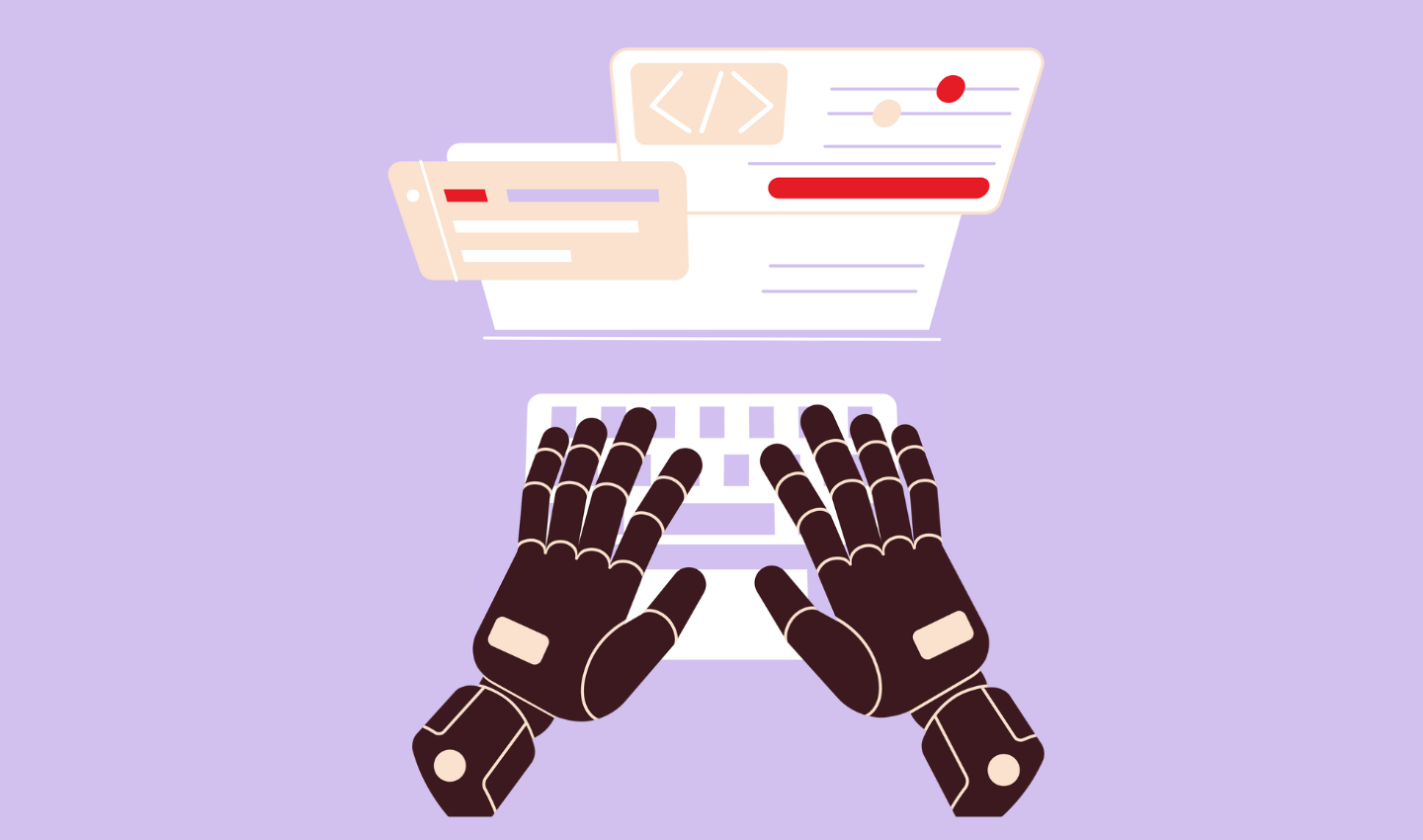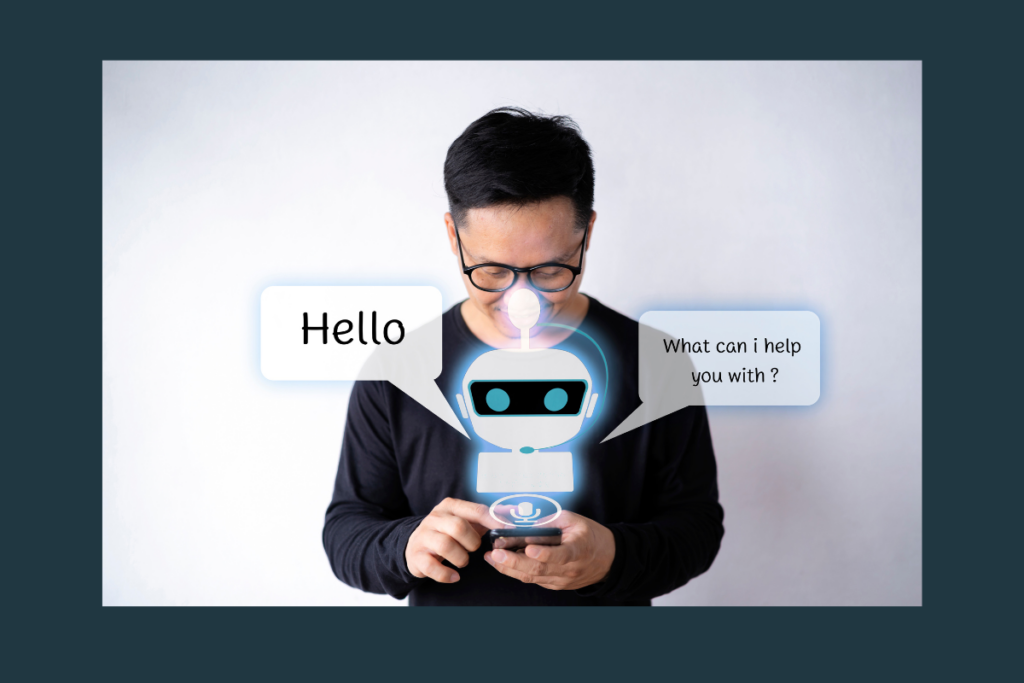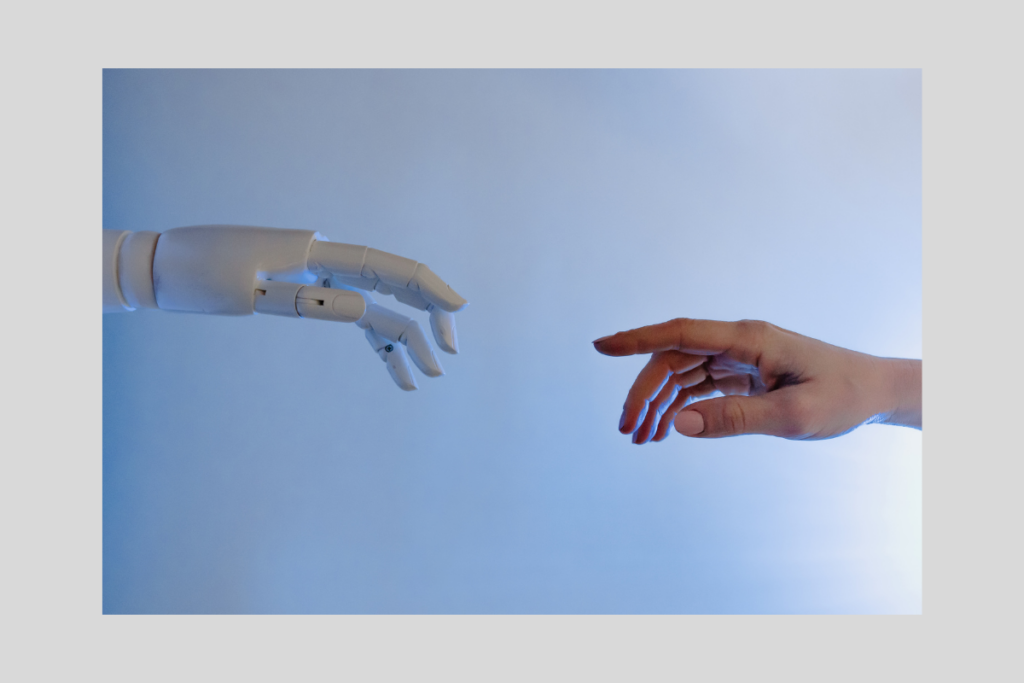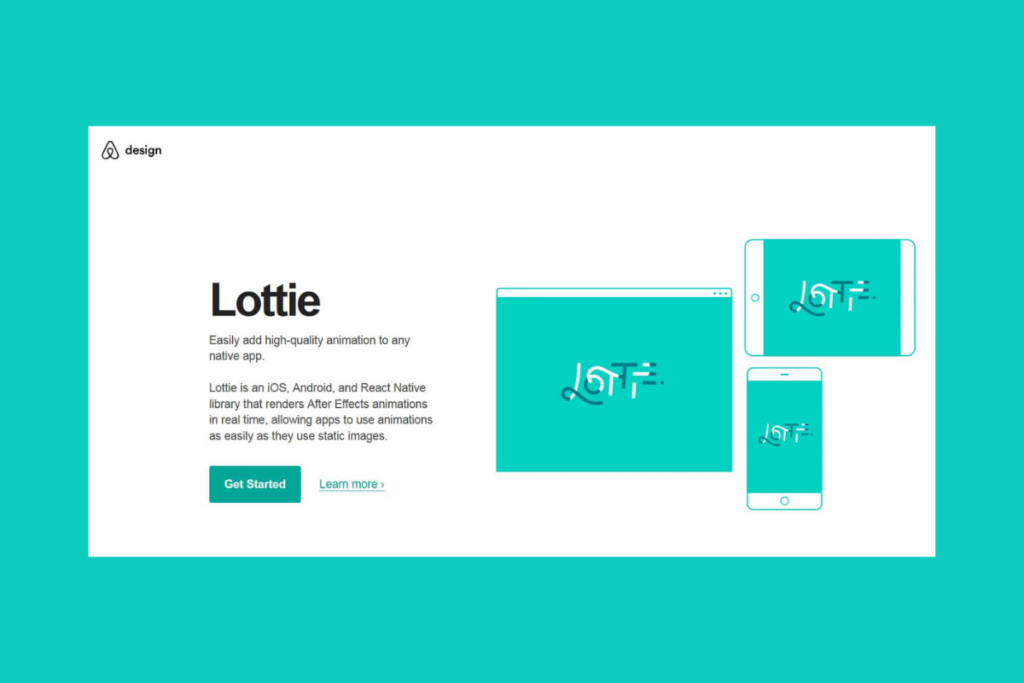
Elevating User Experiences: How AI-Infused Design Systems Revolutionize UX
In the ever-evolving landscape of design, where user experience reigns supreme, a remarkable transformation is taking place at the intersection of creativity and technology. Design systems, those meticulously crafted frameworks that ensure visual consistency and functional harmony, have long been the backbone of standardized design practices. They serve as the guiding principles that steer the creative journey, maintaining brand identity and fostering collaboration.
However, as innovation propels us forward, a new chapter is being written – one that sees the fusion of design systems with the boundless capabilities of artificial intelligence (AI). This convergence is ushering in a paradigm shift, redefining how designers conceive, craft, and maintain user experiences that are not only consistent and adaptable but also dynamically personalized. In this exploration, we embark on a fascinating journey to unravel the intricate synergy between design systems and AI, witnessing firsthand how this fusion is revolutionizing the very essence of design. Welcome to the realm where design systems are elevated by AI, setting the stage for an era of transformative user experiences.

Table of Contents
Understanding Design Systems
Defining design systems and their components (UI components, guidelines, patterns)
Design systems are comprehensive frameworks that encompass a set of standardized design elements, guidelines, and patterns. These systems provide a structured approach to creating and maintaining consistent and coherent visual and functional design across various digital products and platforms. Within design systems, several key components play essential roles:
UI Components
These are reusable building blocks of a user interface, such as buttons, icons, typography, and form fields. UI components ensure visual consistency and enable designers to create interfaces that feel unified and familiar to users.
Guidelines
Design guidelines outline the principles and rules that govern the use of design elements. These guidelines cover aspects like color palettes, typography choices, spacing, and interactions. They serve as a reference to ensure a cohesive design language.
Patterns
Design patterns are established solutions to common design problems. They provide proven ways to structure and organize elements within an interface, enhancing user understanding and interaction.
The importance of design systems in achieving cohesive and scalable design
Design systems are a cornerstone of achieving cohesive and scalable design. They enable designers to work efficiently while maintaining a uniform visual identity. Cohesiveness is crucial because it creates a seamless user experience, reducing cognitive load and enhancing user trust. A consistent design language also reinforces brand recognition and fosters a sense of familiarity among users.
Scalability comes into play as design systems allow for the creation of complex designs without losing consistency. As digital products expand across different platforms and devices, maintaining a unified design becomes challenging. Design systems offer a solution by providing adaptable components and guidelines that can be applied consistently, regardless of the context or screen size.
Benefits of design systems for collaboration, efficiency, and maintaining brand identity
Collaboration
Design systems promote collaboration among design teams, developers, and stakeholders. Everyone follows the same guidelines, reducing misunderstandings and ensuring a shared vision. Designers can communicate more effectively, and developers can implement designs accurately.
Efficiency
Design systems save time and effort by offering pre-defined components and guidelines. Designers don’t need to recreate elements from scratch, and developers can reuse existing code. This efficiency allows teams to focus on refining and innovating rather than repetitive tasks.

Maintaining Brand Identity
Consistency is crucial for brand identity. Design systems ensure that design elements are used consistently, strengthening the brand’s visual identity across different touchpoints. This consistency builds trust and recognition among users.
Understanding design systems is paramount in modern design practices. These frameworks provide a structured approach to design, fostering cohesiveness, scalability, collaboration, efficiency, and brand identity. By defining and adhering to design components, guidelines, and patterns, designers can create compelling and user-friendly experiences that resonate with audiences while effectively conveying a brand’s essence.
The Integration of AI in Design Systems

AI and its potential impact on design
The integration of artificial intelligence (AI) into design systems marks a significant advancement in the field of design. AI refers to the simulation of human intelligence processes by machines, allowing them to perform tasks that typically require human intelligence, such as learning, reasoning, problem-solving, and decision-making. In the realm of design, AI’s potential impact is vast and transformative. By leveraging AI’s capabilities, design systems can revolutionize how designers approach their work, offering innovative tools and insights that can enhance user experiences in unprecedented ways.
Role of AI in enhancing and automating design processes
AI plays a pivotal role in enhancing and automating various design processes within design systems. Designers can leverage AI algorithms to automate repetitive and time-consuming tasks, such as generating design variations, resizing assets for different screen sizes, and even suggesting layout options. This automation streamlines the design workflow, allowing designers to allocate more time to creative and strategic aspects of the design process. Furthermore, AI can analyze vast amounts of data and user behavior to provide valuable insights that inform design decisions, leading to more informed and user-centric designs.
Examples of AI-powered design elements
The integration of AI brings forth a plethora of AI-powered design elements that can significantly impact the design process:

Color Generation: AI algorithms can analyze existing color palettes and user preferences to generate harmonious and visually pleasing color schemes. This helps designers choose colors that resonate with users and maintain brand identity.
Layout Optimization: AI can provide suggestions for optimizing layouts based on factors like user engagement data and usability principles. This ensures that designs are not only visually appealing but also intuitive and effective.

Content Creation: AI can assist in generating content, such as text, images, and even animations. This is particularly valuable for creating personalized and dynamic user experiences, where content can be tailored to individual preferences.
These AI-powered design elements showcase the potential for AI to elevate the design process by offering insights, suggestions, and tools that enhance designers’ creative capabilities and enable the creation of more adaptable and user-centric designs within design systems. The integration of AI represents a new frontier in design, where technology and creativity converge to reshape how designers approach their craft and create exceptional user experiences.
Advantages of AI-Infused Design Systems
In the realm of design, the infusion of artificial intelligence (AI) into design systems heralds a new era of possibilities, offering a range of distinct advantages that augment the user experience in unprecedented ways.

A. Improved Personalization
AI-driven content recommendations: AI’s analytical prowess enables the automatic analysis of user preferences, behavior, and interactions. This information is then harnessed to offer personalized content recommendations, ensuring that users are presented with relevant and engaging materials that cater to their interests.
Dynamic user interfaces tailored to individual preferences: AI empowers design systems to create dynamic interfaces that adapt in real-time to users’ preferences. This dynamic tailoring enhances user engagement by offering a personalized experience that resonates deeply with each individual.
B. Enhanced User Insights
Utilizing AI to gather and analyze user behavior data: AI’s ability to process and interpret vast amounts of user data provides designers with invaluable insights into user behavior, interactions, and preferences. This data-driven approach unveils patterns and trends that guide design decisions, ensuring that the user experience is finely tuned to meet user expectations.
Informing design decisions based on predictive analytics: By utilizing AI-driven predictive analytics, designers can anticipate user needs and behaviors. This foresight enables them to proactively address potential pain points and design interfaces that intuitively cater to user actions, resulting in a more seamless and intuitive user journey.

C. Automation and Efficiency
AI-powered prototyping and iteration: Design iteration is expedited through AI-powered prototyping, which enables designers to quickly generate and test variations of designs. This accelerates the creative process and allows for rapid experimentation, leading to more refined and innovative solutions.
Automated testing and quality assurance: AI can autonomously conduct testing and quality assurance procedures, identifying potential issues and inconsistencies in design elements. This automated approach ensures that the final product is robust and dependable, freeing up designers’ time for more strategic and creative endeavors.
In essence, the integration of AI into design systems propels user experience design into an era of personalized, data-informed, and efficient practices. By harnessing AI-driven content recommendations, dynamic interfaces, user insights, predictive analytics, automated prototyping, and testing, designers can create interfaces that resonate deeply with users, anticipate their needs, and ensure a seamless, delightful, and consistently high-quality user experience.
Challenges and Considerations
The integration of AI into design systems introduces a host of challenges and ethical considerations that must be carefully navigated.
A. Ethical Implications
Ensuring AI-driven design decisions align with ethical guidelines: As AI influences design decisions, it’s imperative to ensure that these decisions adhere to ethical principles. Designers must remain vigilant to prevent AI-generated content that might inadvertently propagate harmful or biased information.
Addressing bias and fairness concerns in AI-generated content: AI systems can inherit biases present in training data, leading to unintended biases in design outputs. Striking a balance between AI automation and human oversight is essential to minimize biases and ensure fairness in content generation.
B. Maintaining Human-Centered Design
Balancing AI-driven efficiency with user-centric design principles: While AI can expedite design processes, it’s crucial to strike a harmonious balance between efficiency and user-centered design. Designers should ensure that the human touch, empathy, and user needs remain central to the design process.
Keeping human designers in the loop to retain creativity and empathy: AI can enhance efficiency, but it can’t replace the innate creativity and empathy that human designers bring to the table. Ensuring that designers remain actively engaged in the design process is vital to preserve the emotional and creative aspects of design that AI might lack.
In sum, the integration of AI into design systems introduces a delicate interplay of ethical considerations and the preservation of human-centered design principles. Striving for ethical AI-driven decisions, addressing bias, and maintaining the human touch are essential to harness AI’s potential while ensuring that design remains thoughtful, empathetic, and aligned with user needs and ethical standards.
AI-Driven Components in Design Systems
The integration of AI within design systems introduces a new dimension of capabilities and efficiency, redefining the way design components are created and adapted.
A. AI-Generated Visual Assets
Images, illustrations, icons produced by AI algorithms: AI is harnessed to create visual assets like images, illustrations, and icons. These AI-generated visuals ensure consistency and reduce the manual effort required for producing diverse design elements.
Ensuring consistency and brand alignment: AI-generated visual assets adhere to established design guidelines, ensuring uniformity and alignment with the brand’s identity. This consistency enhances the overall user experience by presenting a cohesive and recognizable design language.
B. Smart Layouts and Responsive Design
AI-based layout suggestions for different devices and screen sizes: AI analyzes data to propose optimal layouts for various devices and screen dimensions. This feature aids designers in adapting designs to different platforms, ensuring that the user experience remains seamless and intuitive across diverse contexts.
Adaptable design systems that accommodate various contexts: AI-powered layouts enable design systems to be adaptable and versatile, effortlessly adjusting to different screen sizes, orientations, and device types. This adaptability enhances user accessibility and engagement, catering to users’ preferences and the devices they utilize.
In essence, AI-driven components within design systems offer a transformative approach to visual asset creation and layout optimization. By automating the generation of visual elements and proposing adaptable layouts, AI empowers designers to create consistent, visually appealing, and contextually relevant user experiences across a multitude of platforms and devices.
Implementing and Managing AI-Powered Design Systems
Integrating AI into design systems requires a strategic and collaborative approach to ensure effective implementation and ongoing success.

A. Collaboration between Designers and AI Experts
Collaboration between designers and AI experts is paramount for a successful integration. Designers bring their creative insights and domain knowledge, while AI experts contribute their technical expertise in developing and fine-tuning AI models. This partnership fosters a symbiotic relationship where human creativity and technological innovation combine to create optimal AI-powered design solutions.
B. Training AI Models for Design Applications
Training AI models specific to design applications is a critical step. Designers provide input and guidance by feeding AI systems with relevant data and design principles. The AI models then learn and adapt, generating outputs that align with design aesthetics and user needs. This iterative training process ensures that AI-generated elements seamlessly blend with human-crafted designs.
C. Iterative Design and Continuous Learning
Implementing AI-powered design systems is an iterative process. Designers continuously refine AI models based on user feedback and real-world usage. As AI learns from these interactions, it becomes increasingly adept at generating design elements that align with user preferences. This feedback loop enables design systems to evolve and improve over time, creating more refined and effective design solutions.
Implementing and managing AI-powered design systems demands a collaborative effort, technical expertise, and a commitment to continuous improvement. By fostering collaboration between designers and AI experts, training AI models thoughtfully, and embracing iterative design and learning, organizations can harness the full potential of AI to enhance their design processes and deliver exceptional user experiences.
Case Studies: AI in Action
The real-world application of AI within design systems has yielded remarkable innovations, revolutionizing the way design is approached and executed. Let’s delve into two compelling case studies that highlight the transformative power of AI-driven design.

A. Airbnb’s Lottie – Revolutionizing Animation with AI
Airbnb, a global leader in the hospitality industry, embarked on a journey to redefine user interactions through the seamless integration of AI-powered animations into their design systems. The result of their innovation was “Lottie,” an open-source animation tool that has transformed the way designers create captivating and dynamic user experiences.
Challenges and Objectives:
Airbnb recognized the need to enhance user engagement by incorporating visually striking animations. Traditional animation methods were often time-consuming and resource-intensive, hindering the rapid deployment of interactive elements across their platform. The challenge was to streamline the animation process while maintaining brand consistency and visual appeal.
Solution:
Lottie emerged as a game-changing solution that harnessed the power of AI to automate animation creation. Airbnb’s team integrated AI algorithms that analyze design elements and user interactions, generating fluid and interactive animations. These AI-powered animations seamlessly adapt to various screen sizes and devices, ensuring a consistent and engaging user experience.
Benefits:
Efficiency and Consistency: Lottie’s AI-driven animations significantly expedited the animation process, allowing designers to focus on creativity rather than intricate technicalities. The tool ensures consistency across animations, eliminating the risk of visual discrepancies.
Engaging User Experiences: The dynamic and interactive animations created by Lottie enhance user engagement and provide an immersive platform experience. Users are drawn into the interface, leading to increased user satisfaction and retention.
Scalability: Lottie’s AI-powered animations are easily scalable across different parts of the platform, maintaining visual harmony and enhancing the overall brand identity.
Impact:
The integration of AI-powered animations through Lottie has transformed Airbnb’s design systems and user experiences. The platform now boasts seamless, engaging, and visually captivating animations that align perfectly with the brand’s identity. This innovative approach to animation has set a new standard for user interaction, inspiring other companies to explore the potential of AI in their design systems.
B. Adobe Sensei – Elevating Creativity through AI-Driven Design Assistance

Adobe, a pioneer in creative software, embarked on a groundbreaking journey to leverage AI to enhance the creative process for designers. Their creation, Adobe Sensei, reimagined how designers interact with their tools, showcasing the symbiotic relationship between human creativity and AI-driven assistance.
Challenges and Objectives:
Adobe recognized that designers often face challenges in content generation and decision-making during the design process. The goal was to harness AI to streamline content creation, assist with design decisions, and ultimately elevate the quality and efficiency of design workflows.
Solution:
Adobe Sensei emerged as an AI-powered assistant that seamlessly integrates into Adobe’s suite of creative tools. AI algorithms analyze user inputs, design preferences, and trends, generating suggestions for design elements such as images, colors, and typography. This AI-driven design assistance provides real-time insights that guide designers’ decisions.
Benefits:
Efficient Content Generation: Adobe Sensei’s AI-generated suggestions expedite content creation, providing designers with a diverse range of options that align with their vision.
Data-Informed Design: AI algorithms within Adobe Sensei analyze design data to identify patterns and insights. These insights inform designers’ decisions, ensuring that design choices are grounded in data and user preferences.
Enhanced Creativity: By automating certain design aspects, Adobe Sensei liberates designers to focus on more creative and strategic elements of the design process, fostering innovation and artistic exploration.
Impact:
Adobe Sensei has redefined the design process by seamlessly integrating AI-driven design assistance into Adobe’s creative suite. Designers now benefit from an AI-powered collaborator that provides insights, generates suggestions, and ultimately enhances the efficiency and quality of design outputs. Adobe Sensei has elevated creativity, enabling designers to leverage AI’s analytical capabilities while retaining their creative spark.
These case studies exemplify the tangible impact of AI integration within design systems. From AI-powered animations in Airbnb’s Lottie to the intelligent design assistance of Adobe Sensei, these examples demonstrate how AI is reshaping the design landscape, empowering designers to push creative boundaries, streamline processes, and ultimately deliver unparalleled user experiences.
Future Trends and Possibilities
As we look ahead, the evolution of AI and its intersection with design systems promises to shape the future of design in exciting and transformative ways.
Evolution of AI capabilities and their impact on design systems
The future holds boundless possibilities for AI capabilities and their impact on design systems. AI is poised to become more sophisticated, enabling even greater automation, personalization, and predictive insights within design processes. Design systems will evolve to seamlessly integrate AI-driven tools that aid designers in generating complex visuals, crafting user experiences, and making informed design decisions.
Moreover, AI’s ability to understand and anticipate user behaviors will lead to the creation of hyper-personalized experiences. Design systems will harness AI’s predictive analytics to adapt interfaces in real time, catering to individual preferences and enhancing user engagement. This evolution will blur the line between design and user intent, resulting in experiences that feel intuitive and almost prescient.
Integration of AI-powered design systems in emerging technologies (AR, VR)
The integration of AI-powered design systems with emerging technologies like Augmented Reality (AR) and Virtual Reality (VR) will be a defining trend. AI’s ability to understand spatial contexts and user interactions will facilitate the creation of immersive and lifelike experiences. Design systems will play a pivotal role in shaping these experiences by seamlessly integrating AI-driven elements that adapt to users’ physical environments.
In AR, AI-powered design systems can dynamically overlay digital elements onto the real world, enriching users’ surroundings with relevant information and interactive interfaces. In VR, these systems can create responsive and adaptable virtual environments, ensuring that users’ interactions feel natural and intuitive.
Overall, the future trends and possibilities in AI-powered design systems hold the potential to reshape how we perceive, interact with, and design for the digital world. As AI capabilities evolve and integrate with emerging technologies, design systems will become the enablers of highly personalized, immersive, and seamless user experiences that transcend our current understanding of design.
Conclusion

Harnessing AI’s Creative Revolution for Design Systems
In the ever-evolving landscape of design, the integration of artificial intelligence (AI) has brought forth a profound transformation within design systems, reshaping the very core of how designers approach their craft. This journey has led us through a captivating exploration of AI’s impact on various facets of design, from dynamic user interfaces to AI-driven content creation. As we reflect on this transformation, several key takeaways come to the fore.
Transformation of design systems with the integration of AI
The integration of AI into design systems has ushered in a new era of possibilities, unlocking previously unattainable heights of innovation and efficiency. Designers now stand at the crossroads of tradition and technological evolution, empowered by AI-driven tools that streamline processes, optimize layouts, and even anticipate user preferences. This integration has propelled design systems beyond the realm of static patterns, breathing life into dynamic, adaptable, and personalized user experiences.
Potential of AI-Infused Design Systems
The potential for AI-infused design systems is limitless. The marriage of human creativity with AI’s analytical prowess has given rise to design processes that are not only faster but also profoundly impactful. Innovations such as AI-generated visual assets and smart layouts amplify efficiency, allowing designers to allocate more time to innovation and strategic decision-making. As a result, user experiences are elevated, engaging, and seamlessly tailored to individual preferences, fostering deeper connections between users and digital interfaces.
In this era of AI-powered design, the role of designers remains as crucial as ever. AI is not a replacement for creativity; rather, it is a catalyst for its expansion. The synergy between human ingenuity and AI-driven insights is where true magic happens. As AI assists in automating repetitive tasks, generating design elements, and analyzing user behavior, designers are liberated to explore new horizons, channel their creativity, and infuse empathetic design choices. Embracing AI as a collaborative tool empowers designers to amplify their impact and create experiences that resonate deeply with users.
In essence, the integration of AI into design systems marks a pivotal juncture in the evolution of design. The journey we’ve embarked upon showcases the potential for AI to catalyze innovation, enhance efficiency, and enrich user experiences. As we navigate this path forward, let us embrace AI as a steadfast companion, an enabler of boundless creativity, and a bridge to a future where design systems are not merely static frameworks but dynamic symphonies of human imagination and technological prowess.
Take your company to the next level and get results with our world class user experience, interface design and implementation.
Get a FREE 30 min Strategy Session

Related posts
Level Up Your Onboarding: How Canva Personalizes for User Success
In the fiercely competitive world of apps, grabbing a user’s attention is only half the battle. The true test lies […]
Beyond Pointing and Clicking: Exploring the Future of User Interfaces
We’ve come a long way from the days of cryptic commands typed into blinking cursors. User interfaces (UIs), the bridges […]
What is UX & Why Is It Important For Your Business?
Intro User Experience – or more popularly known, UX, has gained compounding popularity in the last 10 years. But let’s […]
Creative product design that gets results
Take your company to the next level with world class user experience and interface design.
get a free strategy session



